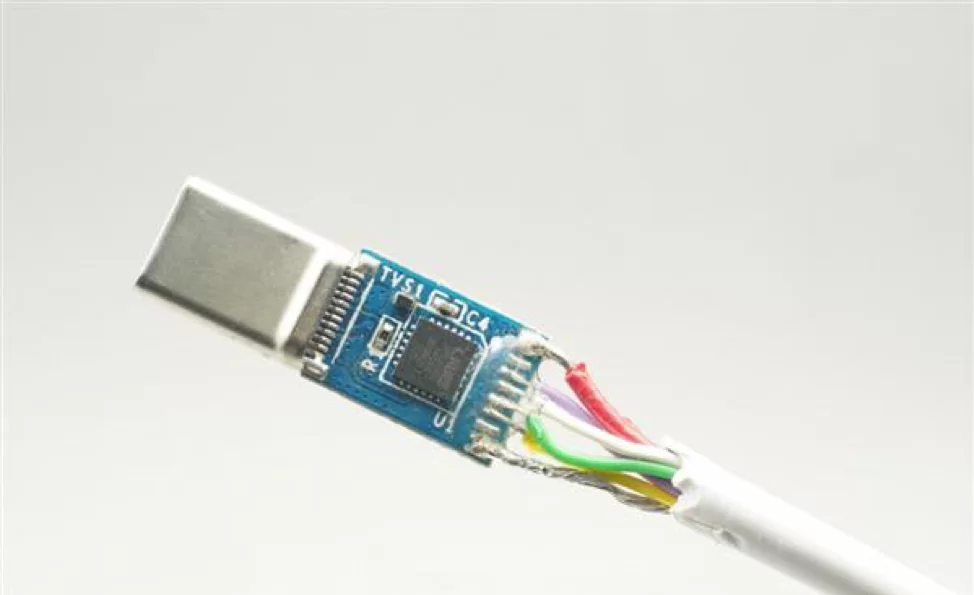How does a USB Type-C cable work?


USB Type-C cables have become increasingly popular in recent years due to their versatility and convenience. They offer a range of benefits over traditional USB cables, including faster data transfer speeds, increased power delivery, and improved connectivity. In this article, we will explore how USB Type-C cables work and why they are becoming the standard for charging and data transfer.
What is USB Type-C?
USB Type-C is a relatively new standard for USB cables and connectors. It was introduced by the USB Implementers Forum (USB-IF) in 2014 and has since gained widespread adoption. The USB Type-C connector is smaller and reversible, meaning it can be plugged in either way, unlike the older USB connectors that had a specific orientation.
How does a USB Type-C cable work?
USB Type-C cables use a set of 24 pins to transmit data and power. These pins are arranged in a symmetrical pattern, allowing the cable to be plugged in either way. The cable itself consists of multiple wires, each serving a specific purpose.
Power Delivery
One of the key advantages of USB Type-C cables is their ability to deliver power. Unlike older USB cables that were primarily used for charging low-power devices like smartphones, USB Type-C cables can deliver much higher power levels. This is made possible by the use of thicker wires and improved insulation.
USB Type-C cables support a feature called Power Delivery (PD), which allows devices to negotiate the amount of power they require. This means that a USB Type-C cable can be used to charge a wide range of devices, from smartphones and tablets to laptops and even some gaming consoles. The power delivery capability of USB Type-C cables can range from 15 watts to 100 watts or more, depending on the specific device and cable.
Data Transfer
In addition to power delivery, USB Type-C cables also support high-speed data transfer. They use the USB 3.1 or USB 3.2 standard, which offers significantly faster transfer speeds compared to older USB standards. USB 3.1 can transfer data at speeds of up to 10 Gbps, while USB 3.2 can reach speeds of up to 20 Gbps.
USB Type-C cables can also support other protocols, such as Thunderbolt 3, which offers even faster data transfer speeds of up to 40 Gbps. This makes USB Type-C cables ideal for transferring large files or streaming high-resolution video.
Advantages of USB Type-C cables
USB Type-C cables offer several advantages over traditional USB cables:
- Reversible: The symmetrical design of USB Type-C connectors means that the cable can be plugged in either way, eliminating the frustration of trying to insert the cable correctly.
- Fast Charging: USB Type-C cables support Power Delivery, allowing for faster charging of devices. This is particularly useful for smartphones and laptops that require a higher power input.
- Increased Power Delivery: USB Type-C cables can deliver higher power levels, making them suitable for charging a wide range of devices, including laptops and gaming consoles.
- Improved Data Transfer Speeds: USB Type-C cables support high-speed data transfer, allowing for faster file transfers and improved performance when using external devices like hard drives or SSDs.
- Compatibility: USB Type-C cables are compatible with a wide range of devices, including smartphones, tablets, laptops, and gaming consoles. They can also be used with adapters to connect to older USB ports.
Conclusion
USB Type-C cables have revolutionized the way we connect and charge our devices. With their reversible design, fast charging capabilities, and high-speed data transfer, they offer a range of benefits over traditional USB cables. As more devices adopt the USB Type-C standard, it is likely to become the standard for connectivity and charging in the future. So, if you haven’t already made the switch to USB Type-C, now is the time to embrace this new technology and enjoy its many advantages.
Recent Posts
How do I create an engaging and informative online quiz or assessment?
Creating an engaging and informative online quiz or assessment can be a powerful tool for… Read More
What are the most effective methods for managing and reducing work-related stress in the hospitality industry?
Work-related stress is a common issue in the hospitality industry, where employees often face long… Read More
How can I improve my assertiveness and communication skills in a leadership position?
In a leadership position, assertiveness and effective communication skills are crucial for success. Being able… Read More
What are the key elements of a successful employee recognition and rewards program?
Employee recognition and rewards programs play a crucial role in motivating and engaging employees, as… Read More
How do I effectively manage and respond to customer feedback and reviews?
Customer feedback and online reviews play a crucial role in shaping a company's reputation and… Read More
What are the best strategies for effective time management as a stay-at-home parent?
Effective time management is crucial for stay-at-home parents who juggle multiple responsibilities on a daily… Read More